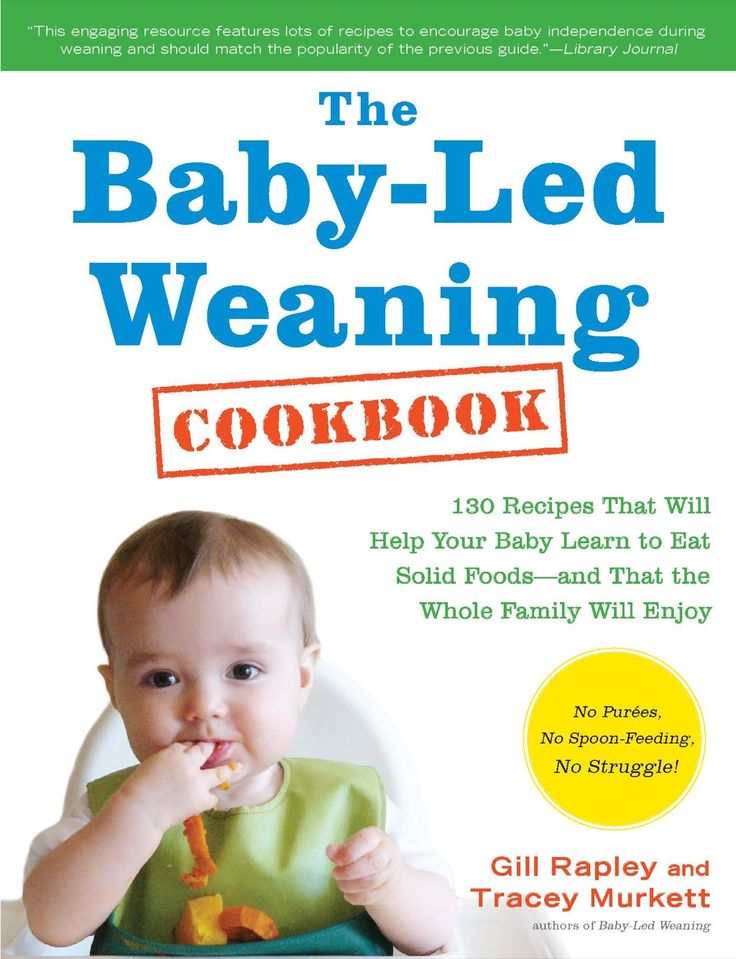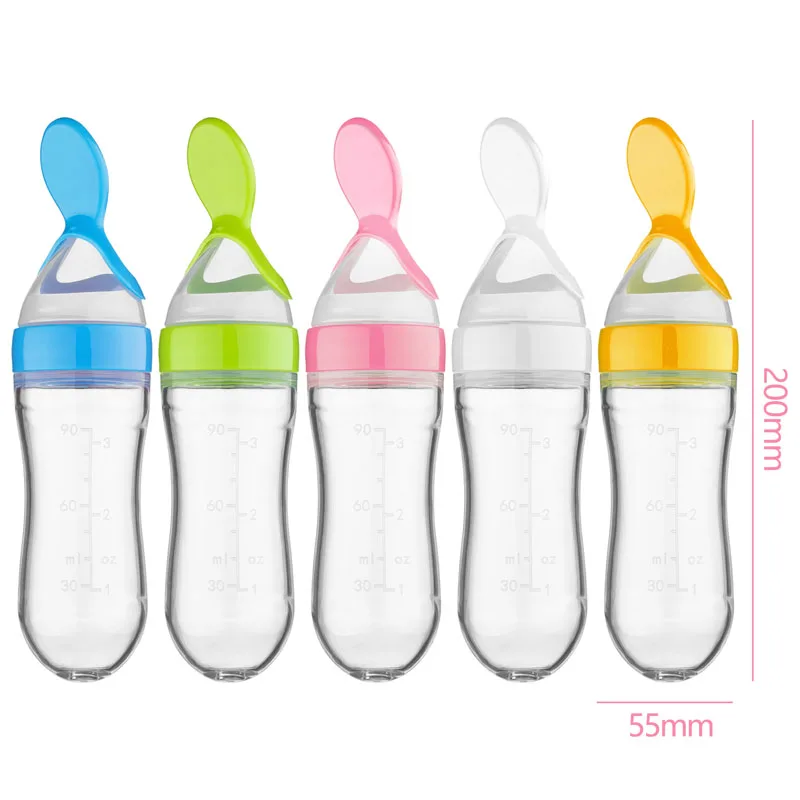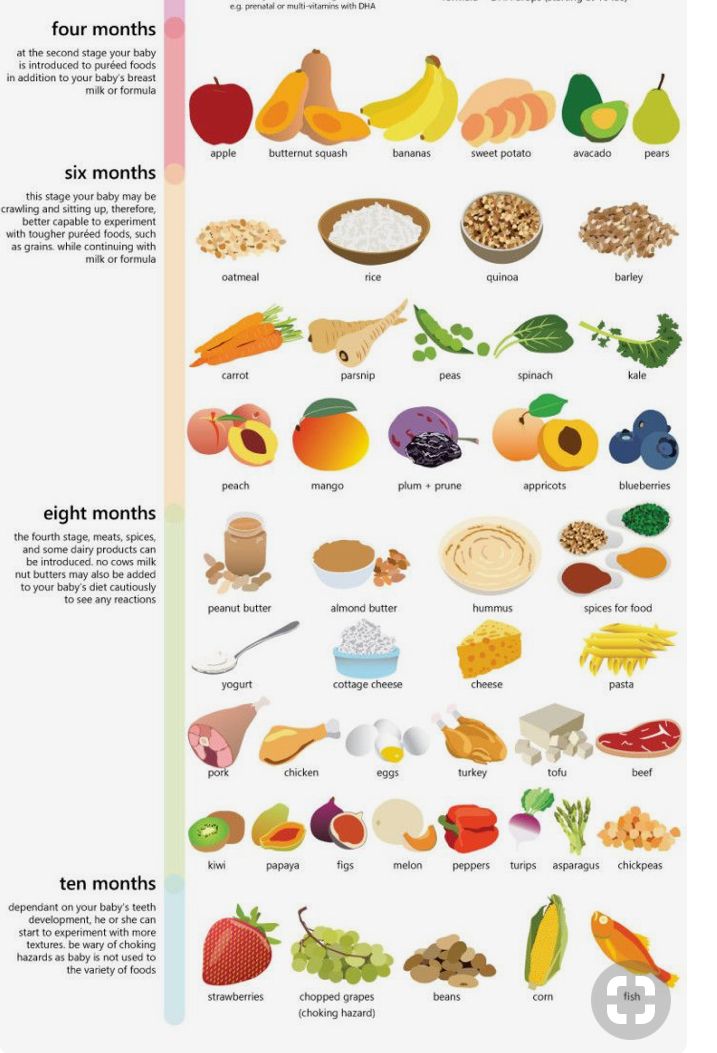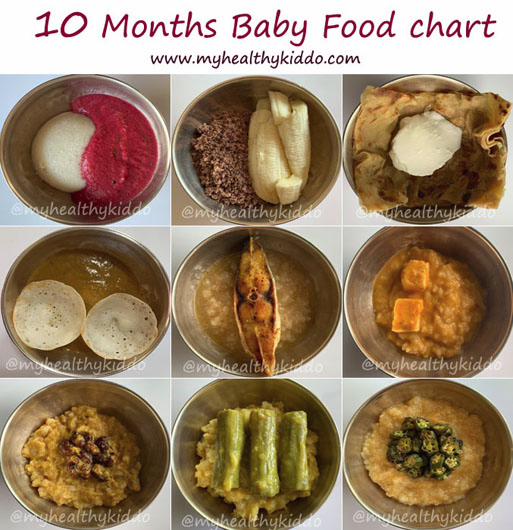Baby food and lead
Homemade baby food contains as many toxic metals as store-bought options, report says
Consumer
By CBS New York Team
/ CBS/CNN
Report: Homemade baby foods could contain toxic heavy metals
Report: Homemade baby foods could contain toxic heavy metals 00:32NEW YORK -- Making baby food at home with store-bought produce isn't going to reduce the amount of toxic heavy metals in the food your baby eats, according to a new report.
"We found no evidence to suggest that homemade baby foods made from store-bought produce are better than store-bought baby foods when it comes to heavy metal contamination," said the paper's coauthor Jane Houlihan, research director for Healthy Babies, Bright Futures.
An alliance of nonprofits, scientists and donors, HBBF, which produced the report, has a stated mission of reducing babies' exposures to neurotoxic chemicals.
Researchers tested 288 foods bought at stores and farmers markets across the United States -- including grains, fruits, vegetables, snacks, teething foods, and family items that babies eat, such as cereals and rice cakes -- for lead, arsenic, mercury and cadmium. Those heavy metals are among the World Health Organization's top 10 chemicals of concern for infants and children.
"Toxic metal exposure can be harmful to the developing brain. It's been linked with problems with learning, cognition, and behavior," according to the American Academy of Pediatrics.
Researchers also pored over data from 7,000 additional food tests reported in published studies and by the US Food and Drug Administration.
Results showed 94% of manufactured baby foods, family foods and homemade purees made from purchased raw foods contained detectable amounts of one or more heavy metals.
Lead was found in 90% of manufactured baby food bought by shoppers for the report and 80% of store-bought family food and homemade purees. There is no safe level of lead, according to the AAP.
Arsenic was found in 68% store-bought baby food and 72% of family food either purchased or prepared at home. Cadmium was found in 65% of purchased baby food and 60% of family foods, and mercury was in 7% of store-bought baby food and 10% of family foods. (The highest levels of mercury are found in seafood, which was not tested in this analysis.)
The new report is a follow-up to a November 2019 report in which Healthy Babies, Bright Futures tested 168 foods purchased from major baby food manufacturers. That analysis found 95% of store-bought baby food contained lead, 73% contained arsenic, 75% contained cadmium and 32% contained mercury. One-fourth of the foods tested that year contained all four heavy metals.
That analysis found 95% of store-bought baby food contained lead, 73% contained arsenic, 75% contained cadmium and 32% contained mercury. One-fourth of the foods tested that year contained all four heavy metals.
"After that report we saw so many people saying you can get around this problem by making your own baby food at home, so we decided to check," Houlihan said. "We suspected we'd find heavy metals in all kinds of food because they're ubiquitous contaminants in the environment.
"And that is exactly what we found -- heavy metals were in foods from every section of the store," Houlihan said. "What this says is that as the FDA is setting standards for heavy metals in baby food, they need to go beyond the baby food aisle."
What's a parent or caregiver to do? Feed baby with as many different types of foods as possible, said pediatrician Dr. Mark Corkins, chair of the Committee on Nutrition of the American Academy of Pediatrics. He was not involved in the study.
"If you spread foods out, and offer a wide variety of options, you'll have less toxicity," Corkins said. "And nutritionally that's always been the right thing to do to get the most micronutrients from the food you eat."
Does buying organic help?
The report found buying organic didn't lower heavy metal levels either, which was "not shocking or surprising," said Corkins, a professor of pediatrics at the University of Tennessee Health Science Center and Le Bonheur Children's Hospital in Memphis, Tennessee.
"It's the soil and water that's contaminated with arsenic and other heavy metals, so it doesn't matter if it's organic or traditional farming methods," Corkins said. That would apply to locally grown crops or even backyard gardens, if the soil had not been verified to be metal-free.
However, buying organic can help avoid other toxins the new report did not consider, such as herbicides and pesticides, said Dr. Leonardo Trasande, director of environmental pediatrics at NYU Langone Health.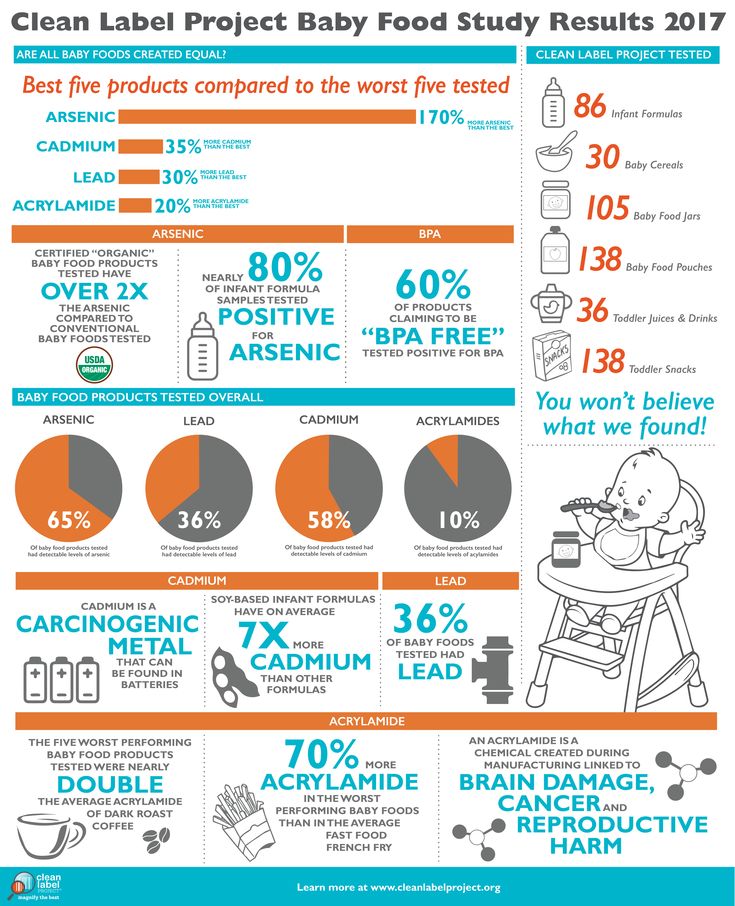 He was not involved in the study.
He was not involved in the study.
"There are other benefits to eating organic food, including a reduction in synthetic pesticides that are known to be as bad for babies, if not even more problematic," Trasande said.
"We've seen multiple studies show significant effects of synthetic pesticides on cognitive function in children as a result of prenatal exposure. We've seen images of the brain where certain parts are smaller that are crucial for higher order functioning after exposure," he added. "A simple step would simply be to say eat organic because regardless of anything we're talking about in this report, it's good for you."
Experts agree that battling toxins in baby foods is a job for government organizations who will need to work with growers, suppliers and manufacturers to institute regulations and safeguards. In the meantime, parents can make a difference.
"Making even one simple choice every day to lower a child's exposure will make a difference, whether that's staying away from rice-based snacks and serving a diced apple instead or choosing not to serve carrots and sweet potatoes every day," Houlihan said.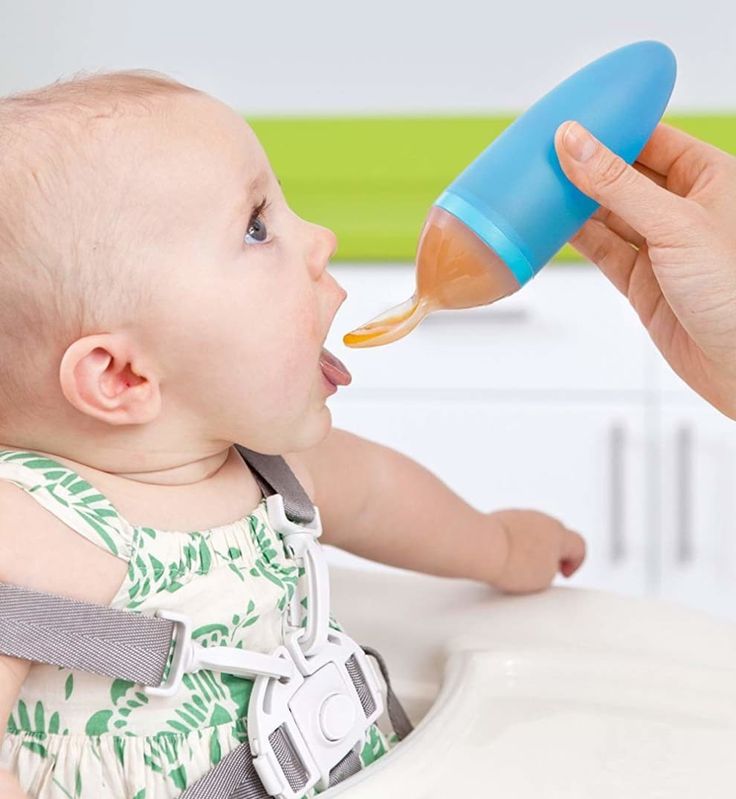
"With heavy metals and other toxins the risks add up over a lifetime," she added. "So even if some of these foods had been served to a child up to their second birthday, starting from there to lower exposure to toxins is going to add up. Every choice matters."
Least contaminated foods
Tested foods with low metal content contain one-eighth as much heavy metal contamination as foods with the highest levels, Houlihan said. These are foods that can be "eaten freely," the report suggested.
Fresh bananas, with heavy metal levels of 1.8 parts per billion, were the least contaminated of foods tested for the report. That's an "82-fold difference in average level of total heavy metals" from the most contaminated food, rice cakes, which tested at 147 parts per billion, according to the investigation.
After bananas, the least contaminated foods were grits, manufactured baby food meats, butternut squash, lamb, apples, pork, eggs, oranges and watermelon, in that order. Other foods with lower levels of contamination included green beans, peas, cucumbers, and soft or pureed home-cooked meats, the report found.
Other foods with lower levels of contamination included green beans, peas, cucumbers, and soft or pureed home-cooked meats, the report found.
Infant formula made with lead-free tap water was recommended. Tap water that has been tested and is free of lead is always a good choice. Milk is also a good choice, but only for babies 12 months and older.
Some healthy lower-metal foods, such as yogurt, unsweetened applesauce, beans, cheese, hard-boiled eggs and grapes that have been cut lengthwise, were good choices for snacks for babies, according to the report.
Fresh and frozen fruit -- including those used in homemade purees -- were options as well. But don't use canned fruits if you can avoid it: "Tests find lead 30 times more often in canned fruit than in fresh and frozen fruit," the report stated.
Parents and caregivers can also lower their baby's exposure to heavy metals by making some smart substitutions, the report said.
Using a frozen banana for a teething baby instead of a rice-based teething biscuit or rice rusk could lower total intake of heavy metals by 95%, according to the report. Another suggested teething aid: peeled and chilled cucumber spears.
Another suggested teething aid: peeled and chilled cucumber spears.
Avoid or limit these foods
The most heavily contaminated foods eaten by babies were all rice-based: "Rice cakes, rice puffs, crisped rice cereals and brown rice with no cooking water removed are heavily contaminated with inorganic arsenic, which is the more toxic form of arsenic," Houlihan said.
Arsenic is a natural element found in soil, water and air, and because rice is grown in water, it is especially good at absorbing inorganic arsenic. ("Inorganic" is a chemical term and has nothing to do with the method of farming.) Brown and wild rice are the worst offenders, as the bran contains the highest arsenic concentrations.
Prior research has shown that even low levels of inorganic arsenic exposure can impact a baby's neurodevelopment. A meta-analysis of studies on the topic found a 50% increase in arsenic levels in urine would be associated with a 0.4-point decrease in the IQ of children between the ages of 5 and 15.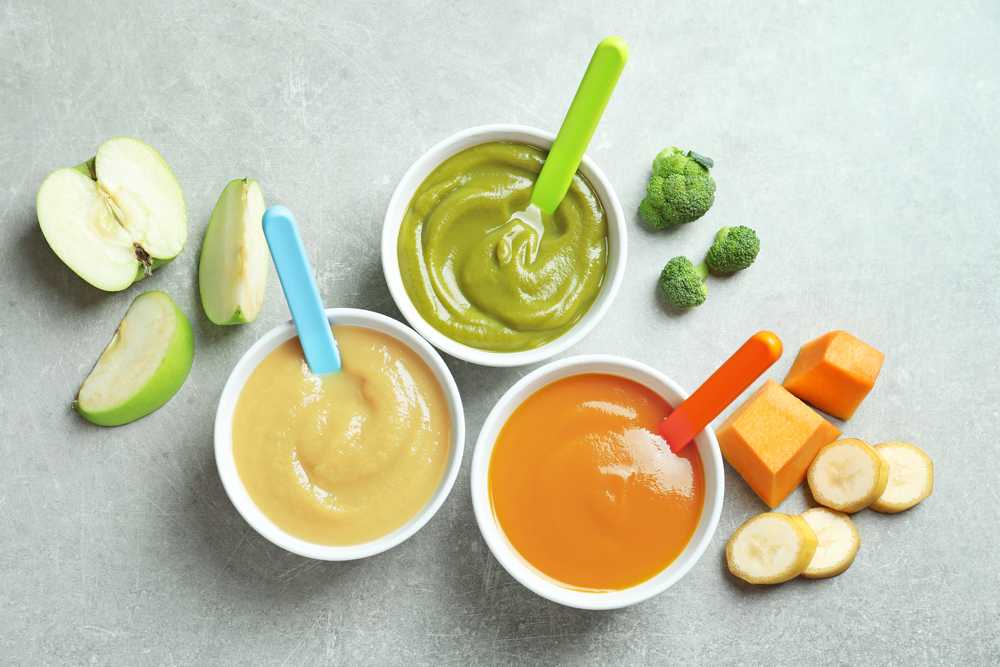
Testing by HBBF found rice cakes were the most contaminated with inorganic arsenic, followed by crisped rice cereal, rice-based puffs and brown rice. The report recommended those foods be avoided entirely, unless the brown rice is cooked with extra water that is poured off before consumption (much like pasta). It's best to do that with all rice, including white and wild rice, the report said, as it can reduce arsenic levels by up to 60%.
Rice-based teething biscuits or rusks and white rice came next on the most contaminated list, the report said. White rice is milled to remove the outer layers, but experts say arsenic levels remain high enough to be concerning, especially if rice is a daily staple.
"Inorganic arsenic averaged 100 parts per billion in brown rice infant cereal and 74 parts per billion in white rice infant cereal in our tests," Houlihan said. "Baby food companies have taken brown rice cereal off the market because of its high arsenic levels."
Parents and caregivers can help by staying away from high-arsenic varieties of white rice grown in Arkansas, Louisiana, Texas, or simply "US" and instead choosing lower-arsenic basmati rice from California, India and Pakistan, as well as sushi rice from the US, the report said.
Serve these foods rarely
After rice-based foods, the analysis found the highest levels of heavy metals in raisins, non-rice teething crackers, granola bars with raisins and oat-ring cereals. But those were not the only foods of concern: Dried fruit, grape juice, arrowroot teething crackers and sunflower seed butter all contained high amounts of at least one toxic metal, according to the report.
"Many foods have a kind of unique, heavy metal profile," Houlihan explained. "For example, we saw very high levels of cadmium in things like spinach, leaf lettuce and peanut butter."
However, the human body doesn't absorb cadmium as easily as other heavy metals, and for that reason "it doesn't have as high a level of concern," Houlihan added.
"There's also not as much evidence that cadmium is neurotoxic to babies, or at least the body of evidence isn't there at the same levels as lead and arsenic," she said. "Lead and arsenic damage isn't reversible -- these are permanent impacts on IQ, learning ability and behavior, so it's a big deal. "
"
Root and tuber vegetables may have higher levels of heavy metals like lead and arsenic because they grow underground. In fact, the investigation found that nutritious baby favorites like carrots, sweet potatoes, squash and many types of potatoes did have concerning levels of heavy metals.
Even the same food could have varying levels of toxic metals, according to the report. For example, a shopper in Raleigh, North Carolina, bought a sweet potato with 60.7 parts per billion of lead -- 10 times more than the store-bought sweet potato puree she purchased. A Chicago shopper purchased a fresh carrot with eight times more arsenic than the premade carrot baby food she took home, the investigation found.
Yet shoppers in Tennessee and California found the opposite -- their fresh produce had minimal levels of heavy metals compared with the manufactured baby food brands they bought.
"As a parent, you don't know what you're picking up out of the produce bin," Houlihan said. "Is it elevated because of the cultivar -- the particular type of sweet potato or carrot? Or is it elevated because it's grown in an area where the soil has naturally high levels of lead?
"Is it elevated because of the cultivar -- the particular type of sweet potato or carrot? Or is it elevated because it's grown in an area where the soil has naturally high levels of lead?
Answering these questions will be the responsibility of government regulators and industry, Houlihan said. The FDA has a Closer to Zero campaign, for example, which could take on the issue.
CNN reached out to the FDA for comment but didn't immediately received a response.
"And remember, if you're protecting the basic ingredients that parents are using to make food at home, you're not only protecting babies and toddlers, you're protecting pregnant women as well. Babies in utero are particularly vulnerable to toxins while the brain is growing at such a rapid pace."
With no way of knowing levels of toxic metals in the soil where produce is grown, parents and caregivers need to add one more step to their efforts to avoid these substances, Houlihan suggested. In addition to mixing up the variety of foods and not serving the same options each day, parents can "choose different brands or varieties of foods or shop in different stores from week to week to avoid choosing a high-metal source regularly. "
"
CBS New York Team
The CBS New York team is a group of experienced journalists who bring you the content on CBSNewYork.com.
Twitter Facebook Instagram
First published on August 11, 2022 / 6:16 PM
© 2022 CBS Broadcasting Inc. All Rights Reserved. This material may not be published, broadcast, rewritten, or redistributed. CNN contributed to this report.
Thanks for reading CBS NEWS.
Create your free account or log in
for more features.
Please enter email address to continue
Please enter valid email address to continue
Closer to Zero: Action Plan for Baby Foods
About | Approach | Action Items & Proposed Timeline | On-Going Work | Announcements
Featured
FDA and Federal Partners Launch Study on the Role of Seafood Consumption in Child Growth and Development
Learn more about the National Academies of Sciences, Engineering, and Medicine study that is designed to provide the most up-to-date understanding of the science of seafood consumption and child growth and development that supports the goals of our Closer to Zero Action Plan. It will also help inform whether updates are needed for the current Advice about Eating Fish for children and those who might become or are pregnant or breastfeeding.
It will also help inform whether updates are needed for the current Advice about Eating Fish for children and those who might become or are pregnant or breastfeeding.
FDA Updates Interim Reference Level for Lead
To help ensure that FDA’s guidance to industry on lead in food is based on the latest science, FDA researchers have lowered the Interim Reference Level. Learn More.
Stakeholder Webinar on Lead in Juice
Watch the stakeholder webinar held on Tuesday, June 14, 2022 where the agency's draft guidance on action levels for lead in juice was discussed.
Guidance
The FDA has issued draft guidance to industry on action levels for lead in single-strength juices and juice blends. To learn more about the action levels and how to submit public comments, please see FDA Issues Draft Guidance to Industry on Action Levels for Lead in Juice.
About the Action Plan
The U.S. Food and Drug Administration’s (FDA) plan, Closer to Zero, identifies actions the agency will take to reduce exposure to arsenic, lead, cadmium, and mercury from foods eaten by babies and young children—to as low as possible. We have prioritized babies and young children because their smaller body sizes and metabolism make them more vulnerable to the harmful effects of these contaminants.
We have prioritized babies and young children because their smaller body sizes and metabolism make them more vulnerable to the harmful effects of these contaminants.
Exposure to arsenic, lead, cadmium, and mercury, from foods depends on the levels of the elements in the food and the amount consumed. The levels of these elements in foods depend on many factors, including:
- the levels of these elements in the air, water, and soil used to grow the crops, which vary depending on factors such as natural geographical differences and past or current contamination,
- the type of food crop and how much “uptake” there is of specific elements from the environment, and
- industrial, manufacturing, and agricultural processes.
Our work, combined with that of our stakeholders, has led to meaningful reductions in exposure to toxic elements. The FDA’s action plan builds on this progress and outlines a science-based, iterative approach for achieving continual improvements over time. Further reductions in the levels of arsenic, lead, cadmium, and mercury in foods will be made by:
Further reductions in the levels of arsenic, lead, cadmium, and mercury in foods will be made by:
- advancing the FDA’s research on and evaluating changes in dietary exposures to these elements,
- setting action levels, with input from stakeholders,
- encouraging adoption of best practices by industry to lower levels of toxic elements in agricultural commodities and products,
- increasing targeted compliance and enforcement activities, and
- monitoring progress of levels over time.
Action levels are a level of contamination at which a food may be regarded as adulterated within the meaning of section 402(a)(1) of the Federal Food, Drug, and Cosmetic Act. The FDA considers action levels, in addition to other factors and scientific evidence, when considering whether to bring enforcement action in a particular case.
Reducing levels of toxic elements in foods is complicated and multifaceted. It is crucial to ensure that measures taken to limit arsenic, lead, cadmium, and mercury in foods does not have unintended consequences—like eliminating from the marketplace foods that have significant nutritional benefits or reducing the presence of one element while increasing another.
The FDA is committed to a science-driven, transparent, and inclusive process that will include active stakeholder engagement and public sharing of data and information. This iterative plan will be updated as new data, information, and resources become available.
Understanding the FDA’s Approach
To make continual improvements, the FDA’s action plan follows a four-stage iterative approach that includes research, regulatory, and outreach efforts.
The Four Stages of the FDA’s Approach:
Evaluate the scientific basis for action levels. The cycle of continual improvement starts with the FDA evaluating existing data from routine testing of the food supply, research and data on chemical analytical methods, toxicological assays, exposure and risk assessments, and other relevant scientific information. Through a process that may include engagement with stakeholders, advisory committees, public workshops, and consultation with scientific experts, federal agency partners and other stakeholders, the agency will establish interim reference levels (IRLs) for certain toxic elements as appropriate. An IRL is a measure of exposure from food that the FDA may use to determine if the amount of exposure to an individual element across foods could result in a specific health impact.
An IRL is a measure of exposure from food that the FDA may use to determine if the amount of exposure to an individual element across foods could result in a specific health impact.
Propose action levels. The IRLs may be among the key factors that inform the development of the FDA’s proposed action levels for certain toxic elements in categories of baby foods (e.g., cereals, infant formula, pureed fruits and vegetables) and other foods commonly eaten by babies and young children.
Consult with stakeholders on proposed action levels, including the achievability and feasibility of action levels. For each individual element in every identified category of food, the FDA will gather data and other information through a process of consultation which could include workshops, scientific meetings, and collaboration with federal partners to assess, among other things, the achievability and feasibility of the proposed action levels and the timeframes for reaching them.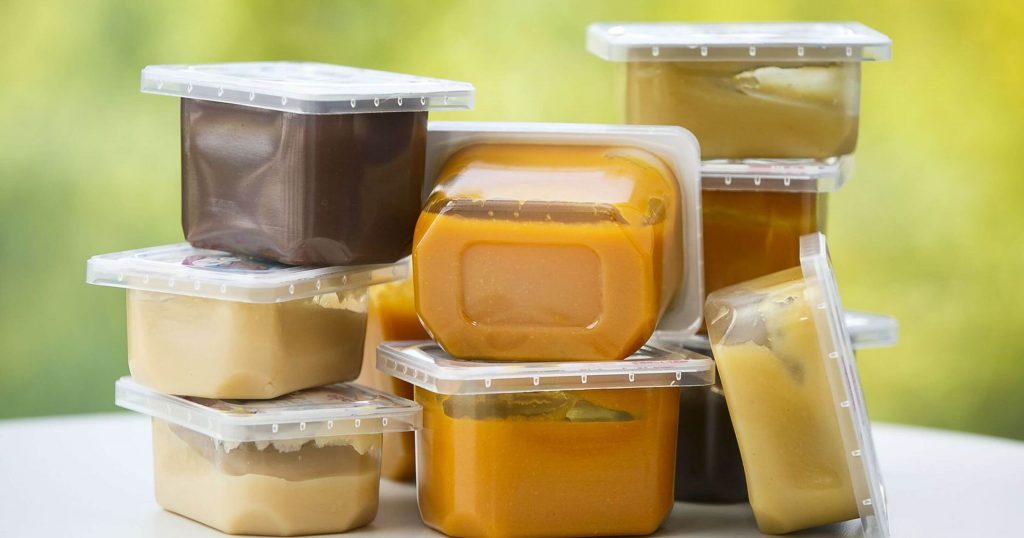
Finalize action levels. The FDA will use the information gathered from stakeholders, updated scientific research, and routine monitoring of data to make any needed adjustments and finalize action levels.
The FDA's Approach in Action
Once the FDA has published final action levels, the agency will establish a timeframe for assessing industry’s progress toward meeting the action levels and recommence the cycle to determine if the scientific data support efforts to further adjust the action levels.
The availability of data and additional research needs for arsenic, lead, cadmium, and mercury are different. Therefore, because of currently available data, we will start with proposing action levels for lead while we evaluate data for the other toxic elements. We will then progress through the cycle for each element as we gather more data and information across various categories of food consumed by babies and young children.
The FDA will support the cycle of continual improvement with ongoing activities related to monitoring levels in foods; research on chemical methods, toxicological impacts, exposures, and risk communication; and routine compliance and enforcement efforts. The FDA will evaluate information as it becomes available to determine whether any foods are adulterated or otherwise violative and take action as appropriate. The FDA intends to make information about our monitoring, research, and enforcement actions publicly available. The timeline and deliverables included in the plan will be updated periodically as new data, information, and resources become available.
The FDA will evaluate information as it becomes available to determine whether any foods are adulterated or otherwise violative and take action as appropriate. The FDA intends to make information about our monitoring, research, and enforcement actions publicly available. The timeline and deliverables included in the plan will be updated periodically as new data, information, and resources become available.
Action Items and Proposed Timeline
Phase 1: April 2021 – April 2022
| Stage in the Cycle of Improvement | Toxic Element | Action |
|---|---|---|
| Evaluate | Arsenic | Gather data through a process of consultation, which could include workshops, scientific meetings, and collaboration with federal partners to work toward establishing an interim reference level |
| Propose | Lead | Draft action levels for categories of foods consumed by babies and young children |
| Consult | Lead | Engage with stakeholders to assess, among other things, feasibility and best practices |
| Ongoing Monitoring, Research, and Compliance | All | Provide resources to industry on best practices for reducing or preventing lead contamination Complete sampling assignment for baby foods |
| Key Accomplishments | All | Provided draft action levels for lead in juice. Made significant progress in evaluating the science for arsenic and the dose-response of cadmium to establish interim reference levels. Sampled baby foods for research, monitoring, and compliance purposes. Collaborated with USDA, USDA-WIC, NIH, consumer safety stakeholders, and industry, including:
|
Phase 2: April 2022 – April 2024
| Stage in the Cycle of Improvement | Toxic Element | Action |
|---|---|---|
| Evaluate | Cadmium Mercury | Gather data through a process of consultation which could include workshops, scientific meetings, and collaboration with federal partners to work toward establishing an interim reference level |
| Propose | Arsenic | Draft action levels for categories of foods consumed by babies and young children |
| Consult | Arsenic | Engage with stakeholders to assess, among other things, feasibility and best practices |
| Finalize | Lead | Finalize action levels for lead in categories of foods consumed by babies and young children |
| Ongoing Monitoring, Research, and Compliance | All | Issue guidance chapter on chemical hazards in the Draft Guidance for Industry on Hazard Analysis and Risk-Based Preventive Controls for Human Food Publish results from sampling assignment for baby foods Publish Total Diet Study results (to occur biennially) Publish exposure assessments for children to toxic elements (to occur biennially) |
Phase 3: April 2024 – beyond
| Stage in the Cycle of Improvement | Toxic Element | Action |
|---|---|---|
| Evaluate | Lead | Review new scientific data, assess progress on reducing lead in foods consumed by babies and young children and feasibility of attaining even lower levels |
| Propose | Cadmium Mercury | Draft action levels for categories of foods consumed by babies and young children |
| Consult | Cadmium Mercury | Engage with stakeholders to assess, among other things, feasibility and best practices |
| Finalize | Arsenic | Finalize action levels for arsenic in categories of foods consumed by babies and young children |
| Ongoing Monitoring, Research, and Compliance | All | Complete additional baby food sampling assignments Publish results from sampling assignment for baby foods Publish Total Diet Study results (to occur biennially) Publish exposure assessments for children to toxic elements (to occur biennially) |
As action levels are finalized, we will continue the cycle of continual improvement, addressing arsenic, lead, cadmium, and mercury in its turn, to evaluate whether downward adjustments of interim reference levels should be made; proposing new action levels, as appropriate; consulting with stakeholders on feasibility, achievability, and other issues; and adjusting (as needed) and finalizing action levels.
Ongoing Work on Toxic Elements
Trends in Exposure to Toxic Elements from Foods for Babies and Young Children (PDF: 1.7MB)
The FDA’s testing of toxic elements in foods has shown that over time there have been significant reductions in the levels of these elements in foods and the Closer to Zero action plan will help further advance progress in this area.
In addition to the actions in the proposed timeline, we will continue:
- Developing and validating analytical methods.
- Toxicological research on impacts of toxic elements on development in children.
- Developing new dose-response models to consider the probability of other adverse health effects in different sub-populations, including infants and young children.
- Collaborating with the U.S. Department of Agriculture on research on agronomic techniques that may mitigate uptake of toxic elements in agricultural commodities.
- Collaborating with the National Institutes of Health and the Centers for Disease Control and Prevention to better understand impacts of toxic elements on development and the role of nutrition for mitigating those impacts.

- Evaluating potential impact of new technologies, interventions, or mitigation controls to reduce exposure and resulting risk to consumer health.
- Reevaluating risk assessments based on declining levels of toxic elements in foods.
The FDA’s regulatory actions, along with research and collaboration with all of our stakeholders – industry, advocacy, policy makers, academia, and consumers – will result in significant reductions in exposures to arsenic, lead, mercury, and cadmium, among children and the general population and have lasting public health impact.
Announcements
FDA to Hold Webinar on the Draft Guidance for Industry on Action Levels for Lead in Juice (June 20, 2022)
FDA Issues Draft Guidance to Industry on Action Levels for Lead in Juice (April 27, 2022)
FDA Announces First Closer to Zero Action Plan Public Meeting (October 8, 2021)
FDA Statement: FDA Releases Action Plan for Reducing Exposure to Toxic Elements from Foods for Babies, Young Children (April 8, 2021)
FDA Shares Action Plan for Reducing Exposure to Toxic Elements from Foods for Babies and Young Children (April 8, 2021)
FDA Letter to Industry on Chemical Hazards, including Toxic Elements, in Food and Update on FDA Efforts to Increase the Safety of Foods for Babies and Young Children (March 5, 2021)
FDA Statement: FDA Announces New Actions Aimed at Further Reducing Toxic Elements in Food for Babies, Young Children (March 5, 2021)
FDA Response to Questions About Levels of Toxic Elements in Baby Food, Following Congressional Report (February 16, 2021)
Arsenic, lead and mercury found in popular brands of baby food
https://ria. ru/20210205/pitanie-1596127725.html
ru/20210205/pitanie-1596127725.html
Arsenic, lead and mercury found in popular brands of baby food
Found in popular brands of baby food arsenic, lead and mercury - RIA Novosti, 02/05/2021
Arsenic, lead and mercury found in popular brands of baby food .. RIA Novosti, 05.02.2021
2021-02-05T10: 41
2021-02-05T10: 41
2021-02-05T16: 38
in the world
USA
WHO 9000 head/meta[@name='og:title']/@content
/html/head/meta[@name='og:description']/@content
https://cdnn21.img.ria.ru /images/156244/93/1562449374_0:0:2279:1282_1920x0_80_0_0_d929793688c9dd7ff87ce7e2722ad5f9.jpg
MOSCOW, February 5 - RIA Novosti. High levels of heavy toxic metals, including arsenic, lead, cadmium and mercury, have been found in some U.S. baby formulas that can lead to neurological damage in children, according to a U.S. House of Representatives study. Economic and Consumer Policy Subcommittee experts examined the domestic documentation from Gerber, Nurture Inc, Hain Celestial Group Inc, Beech-Nutrition, who provided data on a voluntary basis in response to a subcommittee request. It was based on reports of the presence of metals a year earlier. Walmart, Campbell and Sprout Organic Foods refused to cooperate with the investigators. "The subcommittee investigation proves that commercial baby food contains dangerous levels of arsenic, lead, mercury and cadmium. "metals pose a serious health hazard to infants and toddlers. Manufacturers knowingly sell these products to unsuspecting parents, despite internal company standards and test results, and without any warning labels," the subcommittee on economic and consumer policy said in the text of the study. in the structure of the Committee on Oversight and Reform in the US House of Representatives. It is noted that exposure to toxic heavy metals leads to a "permanent decrease in IQ", as well as a decrease in "infant neurological development and long-term brain function." According to the US regulator and WHO, these four heavy metals are hazardous to human health, "especially for infants and children, who are most susceptible to their neutrotoxic effects.
It was based on reports of the presence of metals a year earlier. Walmart, Campbell and Sprout Organic Foods refused to cooperate with the investigators. "The subcommittee investigation proves that commercial baby food contains dangerous levels of arsenic, lead, mercury and cadmium. "metals pose a serious health hazard to infants and toddlers. Manufacturers knowingly sell these products to unsuspecting parents, despite internal company standards and test results, and without any warning labels," the subcommittee on economic and consumer policy said in the text of the study. in the structure of the Committee on Oversight and Reform in the US House of Representatives. It is noted that exposure to toxic heavy metals leads to a "permanent decrease in IQ", as well as a decrease in "infant neurological development and long-term brain function." According to the US regulator and WHO, these four heavy metals are hazardous to human health, "especially for infants and children, who are most susceptible to their neutrotoxic effects. "
"
https://ria.ru/20200815/1575813258.html
https://radiosputnik.ria.ru/20210125/pitanie-159444892.html
US
96
7 495 645-6601
FSUE MIA "Russia Today"
https: //xn---c1acbl2abdlkab1og.xn-p1ai/AVARDS/
2021 9000 9000 9000 9000 RIA Novosti
1
5
4.7
96
7 495 645-6601
Rossiya Segodnya
https://xn--c1acbl2abdlkab1og.xn--p1ai/awards/
News -RU
https://ria.ru/docs/about/copyright.html
https://xn--c1acbl2abdlkab1og.xn--p1ai/
RIA Novosti
1
5
4. 96
7 495 645-6601
Rossiya Segodnya 95 645-6601
Federal State Unitary Enterprise MIA Russia Today
https: //xn---C1acbl2abdlkab1og.xn--p1ai/Awards/
RIA Novosti
1
5
4.7 9000 9000 9000
Internet- [email protected]
7 495 645-6601
Rossiya Segodnya
https://xn--c1acbl2abdlkab1og.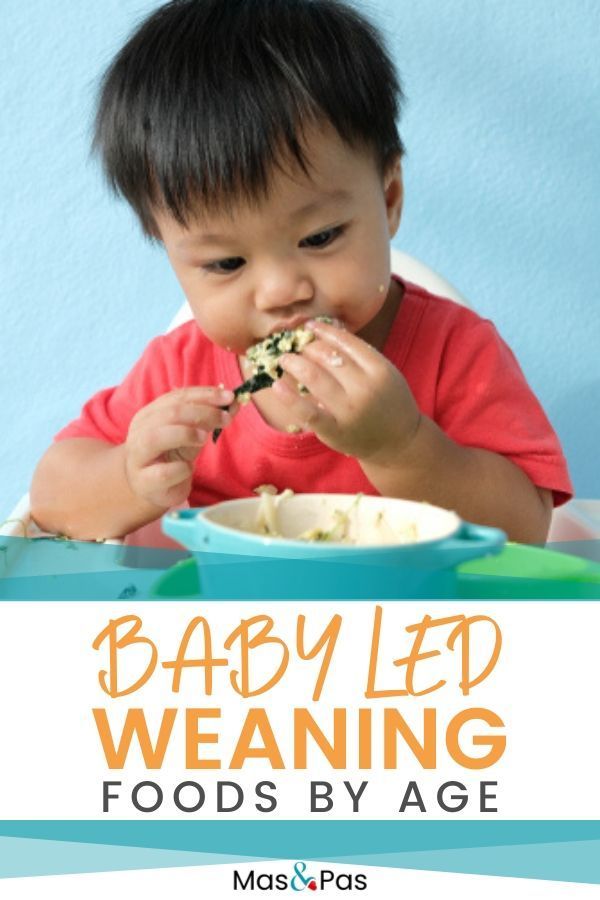 xn--p1ai/awards/
xn--p1ai/awards/
worldwide , walmart
Worldwide, USA, WHO, Health - Society, Walmart
MOSCOW, February 5 - RIA Novosti. High levels of heavy toxic metals, including arsenic, lead, cadmium and mercury, have been found in some US baby formulas that can lead to neurological damage in children, according to a US House of Representatives study.
Experts from the Economic and Consumer Policy Subcommittee reviewed internal documentation from Gerber, Nurture Inc, Hain Celestial Group Inc, Beech-Nutrition, which provided data on a voluntary basis in response to a subcommittee request. It was based on reports of the presence of metals that appeared a year earlier.
August 15, 2020, 02:05 AM
Sugar in baby food deemed dangerous for adults
Walmart, Campbell and Sprout Organic Foods refused to cooperate with the investigators.
"Subcommittee investigation finds that commercial baby food contains dangerous levels of arsenic, lead, mercury, and cadmium. These toxic heavy metals pose a serious health hazard to infants and toddlers. Manufacturers knowingly sell these products to unsuspecting parents, despite internal company standards and test results, and without any warning label," the text of the study by the subcommittee on economic and consumer policy in the structure of the Committee on Oversight and Reform in the US House of Representatives says.
These toxic heavy metals pose a serious health hazard to infants and toddlers. Manufacturers knowingly sell these products to unsuspecting parents, despite internal company standards and test results, and without any warning label," the text of the study by the subcommittee on economic and consumer policy in the structure of the Committee on Oversight and Reform in the US House of Representatives says.
Exposure to toxic heavy metals has been reported to result in a "permanent decline in IQ" as well as a reduction in "infant neurological development and long-term brain function". According to the US regulator and WHO, these four heavy metals are hazardous to human health, "especially for infants and children, who are most susceptible to their neutrotoxic effects."
January 25, 2021, 12:13
The Prosecutor General's Office will check the quality of food in kindergartens and schools
Mercury, arsenic and lead found in baby food.
 HORRIBLE or not?
HORRIBLE or not? New report reveals that heavy metals, including lead, arsenic and mercury, can be found in commercial baby food at levels well above what is considered safe for children by US standards (7 largest manufacturers (including two brands with organic), 169 baby foods, and 95% of them contain at least one heavy metal).
Approximately the same results were in the previous study for 2019
How do mercury, lead, arsenic and cadmium get into baby food?
Because we humans actively pollute the environment. When food is grown on contaminated soil and irrigated with water containing heavy metals, the food becomes contaminated.
How dangerous are these amounts of heavy metals to babies?
These substances—arsenic, lead, cadmium, and mercury—are neurotoxins that can permanently alter the developing brain, impair IQ, and affect behavior.
Even in trace amounts found in food, these contaminants can alter the developing brain and lower a child's IQ. The impact is cumulative with every meal or snack the child eats. New research continues to confirm the widespread exposure and risks for infants, including cancer and lifelong intellectual disability from exposure to these common food contaminants. Despite the risks, with a few exceptions, there are no mandatory limits on the content of toxic heavy metals in baby food.
The impact is cumulative with every meal or snack the child eats. New research continues to confirm the widespread exposure and risks for infants, including cancer and lifelong intellectual disability from exposure to these common food contaminants. Despite the risks, with a few exceptions, there are no mandatory limits on the content of toxic heavy metals in baby food.
The World Health Organization and the FDA have established acceptable daily allowances for heavy metals. However, it is important to understand that for many heavy metals, including lead and arsenic, there is no daily intake that is completely devoid of long-term health risks.
With regard to lead, the FDA considers as little as 3 micrograms per day or more for children to be dangerous. In comparison, the safe level for adults is up to 12.5 micrograms per day.
Children weigh less than adults, so the same dose of heavy metals causes much higher concentrations in the blood of infants. This increases the risk of neurological damage, as the young brain develops faster and is at risk. Moreover, these children are at increased risk of behavioral problems such as aggression and attention deficit disorder.
Moreover, these children are at increased risk of behavioral problems such as aggression and attention deficit disorder.
This is not to say that lower doses are safe. Recent studies show that lower levels of lead or mercury still affect neurological function, but not as much.
At the same time, in baby food, the level of arsenic was exceeded by 91 times, lead - by 177 times, cadmium - by 69 times and mercury - by 5 times. The audit showed that the internal standards of the companies allow such a metal content in the products and the manufacturers deliberately sold it.
What can parents do to reduce their child's exposure?
Different foods contain different amounts of heavy metals. Parents can choose products to reduce their child's exposure.
The following is recommended:
1) Minimize consumption of rice-based products, including rice cereal, puffed rice, and rice-based teething biscuits. According to a Healthy Babies study of 168 baby foods, switching from rice-based foods to foods made with oats, corn, barley, or quinoa can reduce arsenic intake by 84% and total heavy metals by about 64%.
Using frozen banana slices or a clean washcloth instead of rice teething biscuits has been found to reduce total heavy metal exposure by about 91%.
2) Switch from fruit juices to water. Fruit juice is not recommended for young children because it contains sugar, but it is also a source of heavy metals. According to the report, switching to water can reduce the consumption of heavy metals by about 68%.
3) Alternate root vegetables (carrots, sweet potatoes) with other vegetables that grow on the surface. This will help reduce the total heavy metals that day by about 73%.
Making your own baby food cannot reduce your baby's exposure to heavy metals. It depends on the dosage of heavy metals in each of the ingredients you use. Organic does not automatically mean that the heavy metal content is lower because the soil may have been contaminated many years before it was used for growing organic food, and water runoff from neighboring farms may contaminate common water sources.